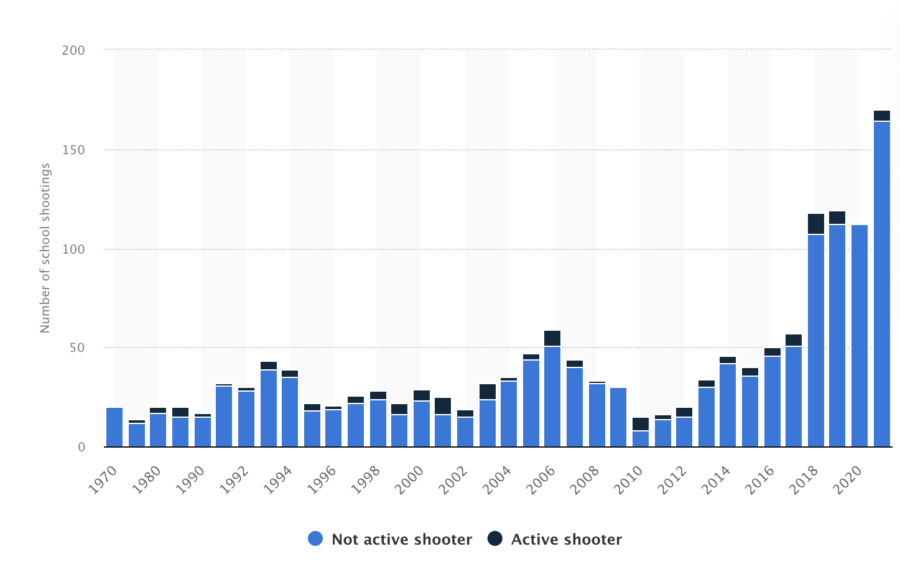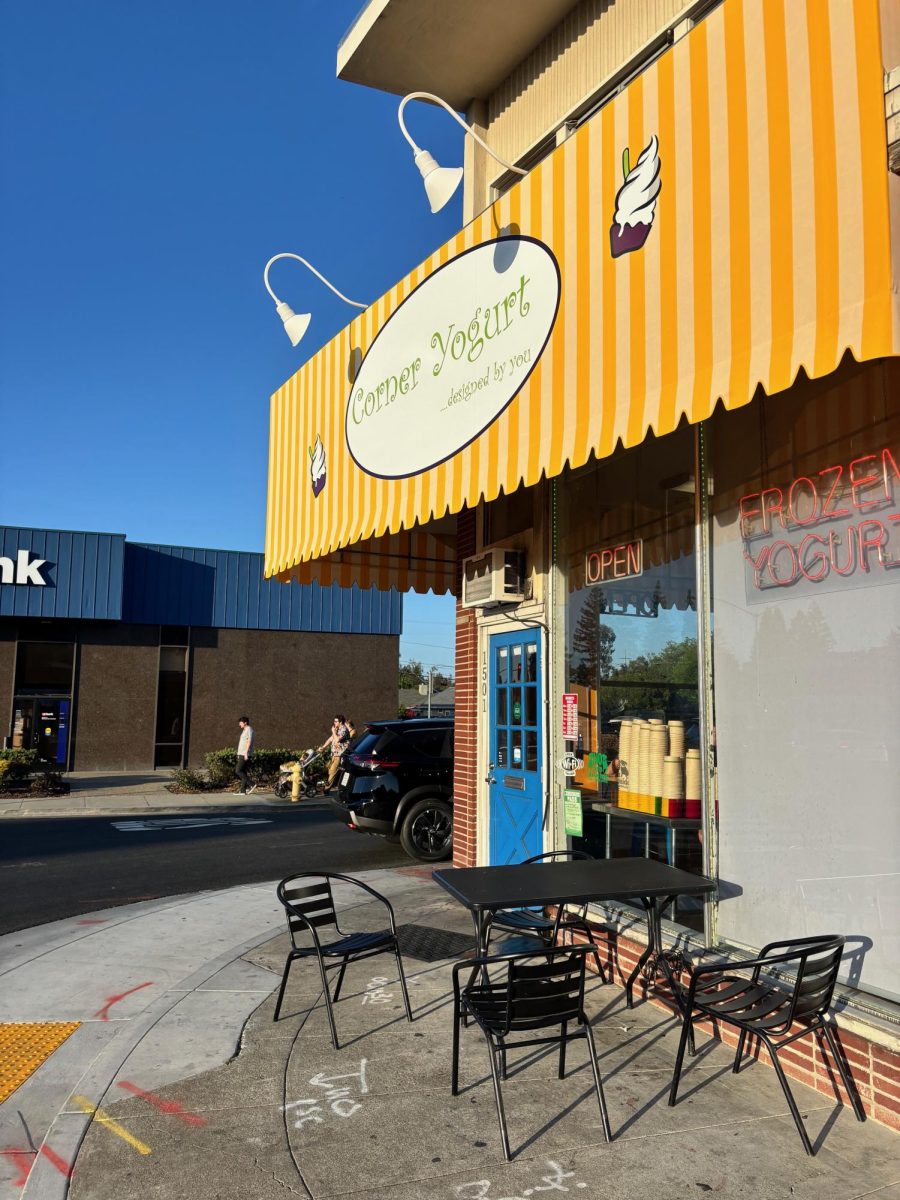School shooting rates dropped to an all-time low due to the COVID-19 lockdown, starting in March of 2020. Now, with most schools back in session, a multitude of school shootings have been reported. Woodside has responded with a call for an increase in support for mental health to prevent violence on campus.
Many people had a variety of reactions and experiences in quarantine. Some thrived in isolation, while others’ mental health plummeted. Incidentally, a common reason for gun violence in schools has its roots in mental health problems. 56% of respondents agreed with the statement that school shootings occur because of mental health issues according to a study conducted by Alfred University in New York.
“We need to support mental health and fully fund supporting mental health,” Woodside history and ethnic skills teacher Kayla Dice said. “We also need to support getting early intervention and supporting students who are struggling with their mental health. Making connections and creating belonging on campus is huge.”
Schools, including Woodside, have been offering support systems that have proved beneficial to students who are dealing with mental health problems.
“Schools should continue to provide therapy and assistance to whoever is dealing with mental health problems, and provide counseling and things like that,” Owen Perez, Woodside freshman said.
Another factor causing violence in American schools is bullying. One-third of the globe’s youth is bullied. Studies conducted by organizations such as stopbullying.com show that the effects of bullying can last into adulthood and can result in physical harm to others or oneself.
“[We need to make] sure that all students feel welcome,” Dice continued. “I’m sure that there are other things like policy laws, but that’s out of my control. So what I can control and what I can suggest… I realized realistically for [schools] to implement right now would be mental health support and belonging.”
In schools in the U.S, students of all ages practice active shooter drills, usually called “lockdown drills.” These drills teach students how to deal with gun violence and what happens if someone comes to the school and imposes a threat.
“I think having drills is important, talking about what causes school shootings, and talking about what happens during school shootings,” Woodside freshman Maxwell Tienken said. “[It’s crucial to talk] about why shooters do it and how we can prevent that.”
Although lockdown shooter drills are a staple in safety drills, a report from NBC sees that while examining nearly 28 million social media posts tied to 114 schools, they found that a higher rate of depression and stress follows active shooter drills.
“Knowing myself, if there is ever a shooting and [if] I can make it off campus, I will be running away, I will not just sit there like how we practice for drills, being a sitting duck when I know there is a shooter out there,” Natasha Cacace, Woodside junior said. “Of course, they are going to know that students are on campus, they won’t see classroom lights turned off in the middle of the day and think, ‘Yeah, there’s nobody here.’”
According to figures from Educator’s School Safety Network, incidents of school violence spiked by more than 185% from the school years of 2016-2017 to 2018-2019. Over these three years, the number of threats also increased by 62%.
“I think banning weapons is pretty standard,” Tienken weighed in. “I don’t think security checks are really necessary. Gun regulations and background checks are important.”
Other ideas have been suggested as well, such as constructing ways for students and staff to be safe if an attacker were on campus.
“I’d say each classroom has an escape route and drills where students take the escape route.” Perez described. “The escape route would take the students and staff to a safe place away from the attacker or raider.”
Eliminating the threat of school shootings is not something the school can do by itself, though.
“You can protest. You can be active in protecting the community,” Cacace warned. “But someone is always going to be out there in this mindset, just waiting to go to a school and start a panic.”









